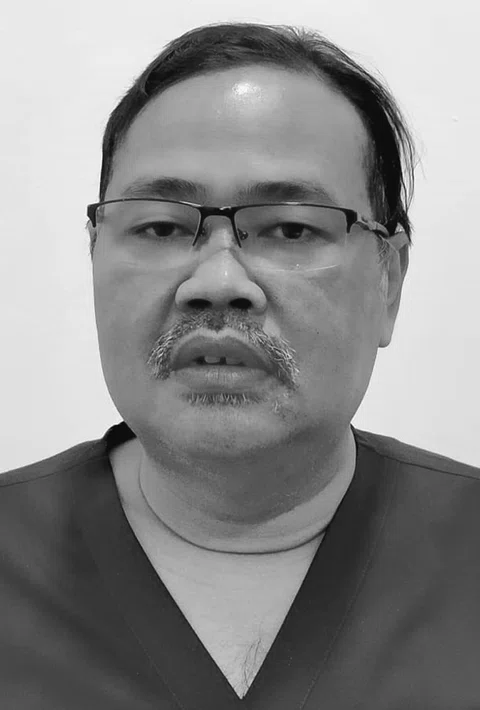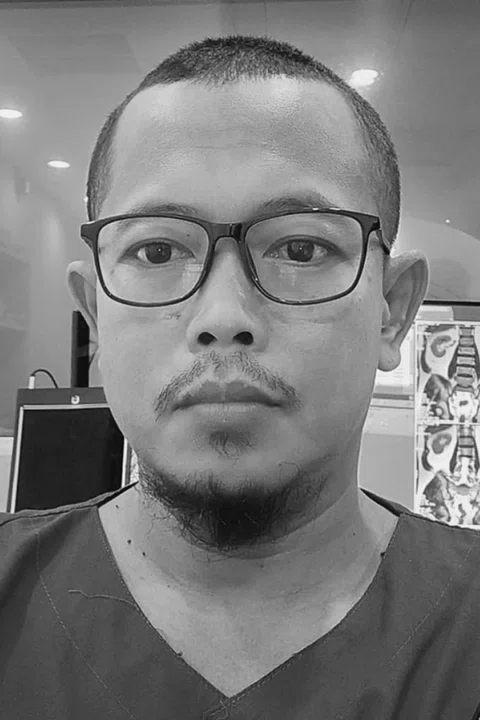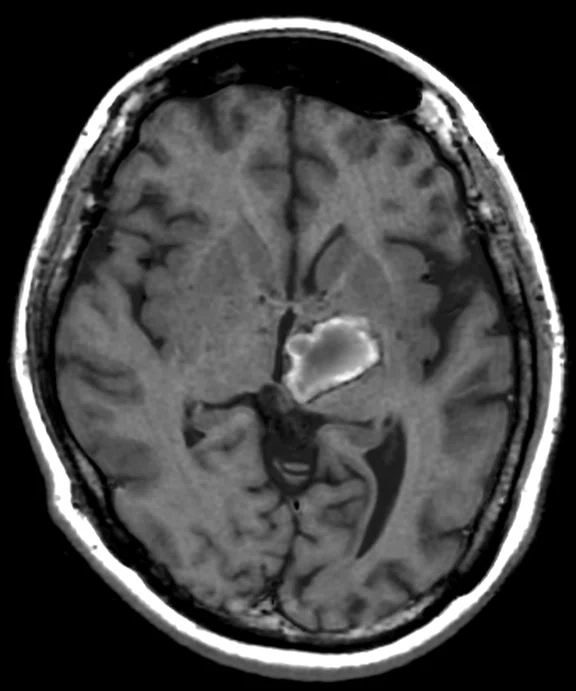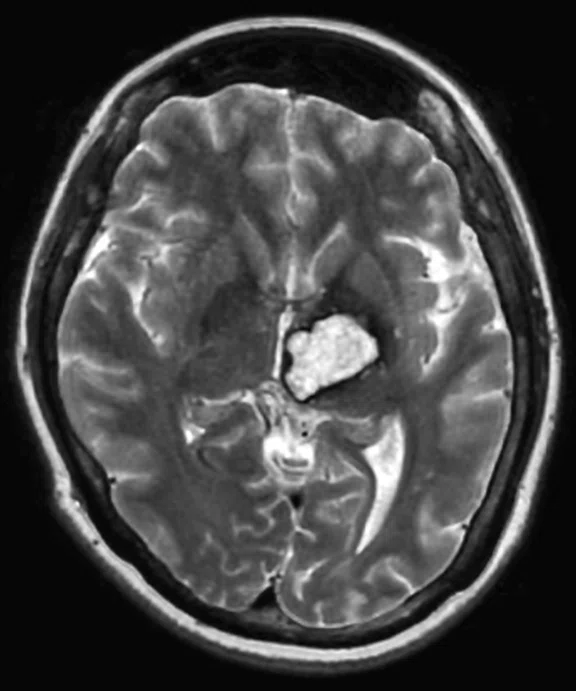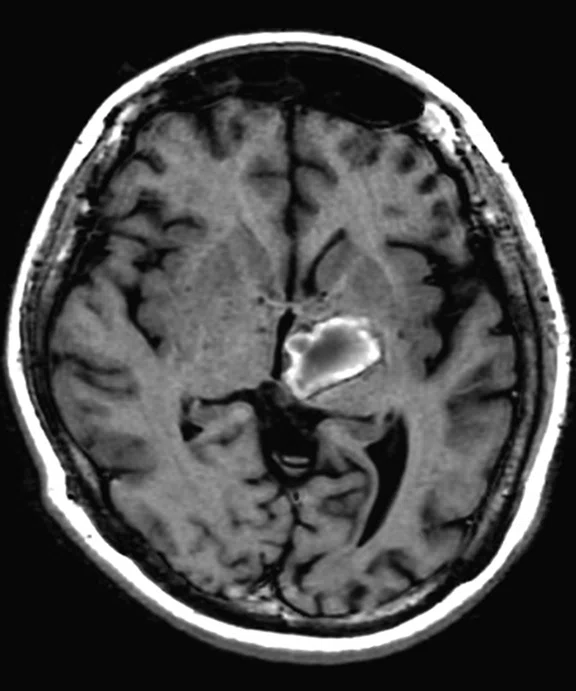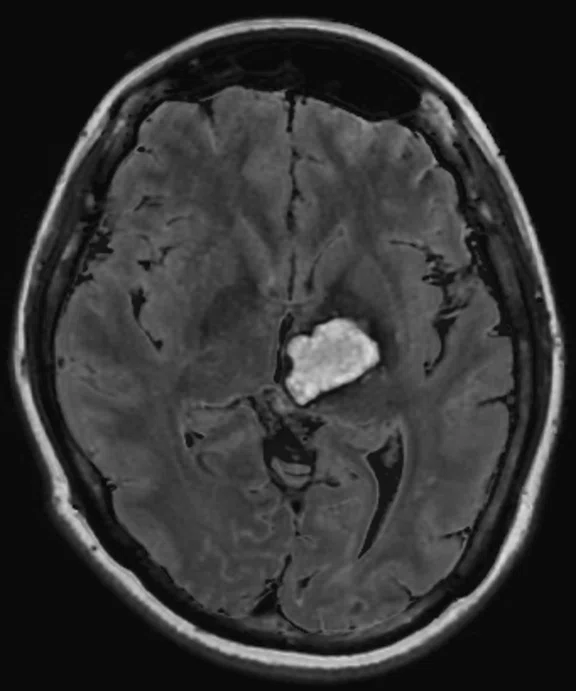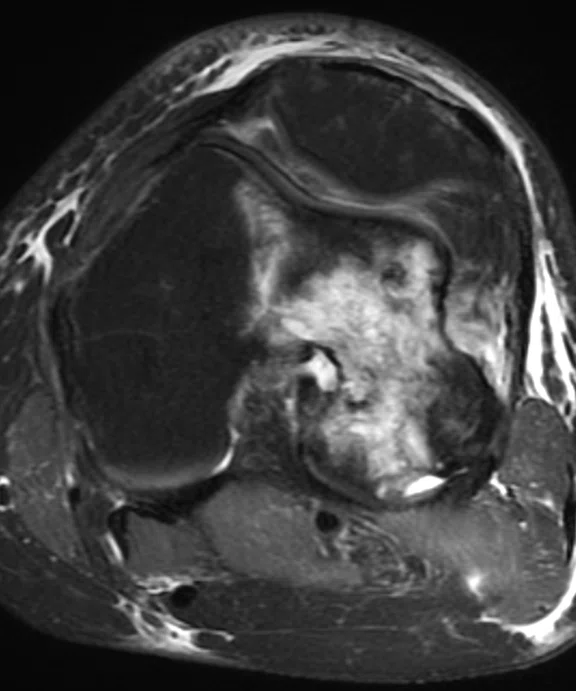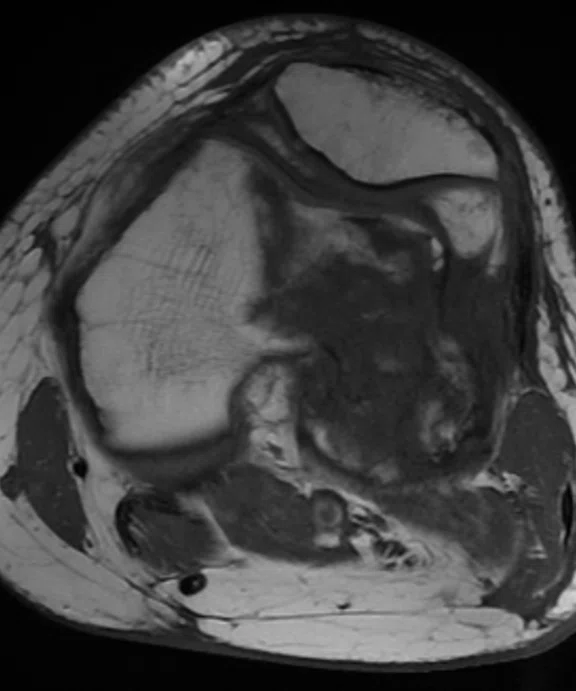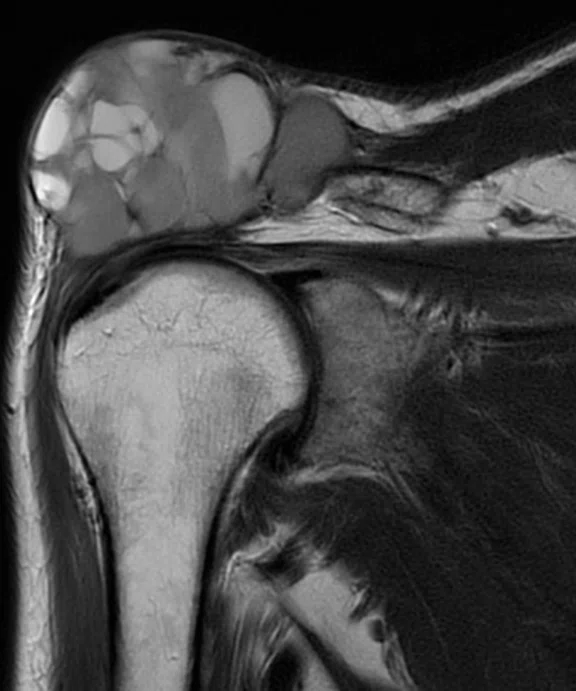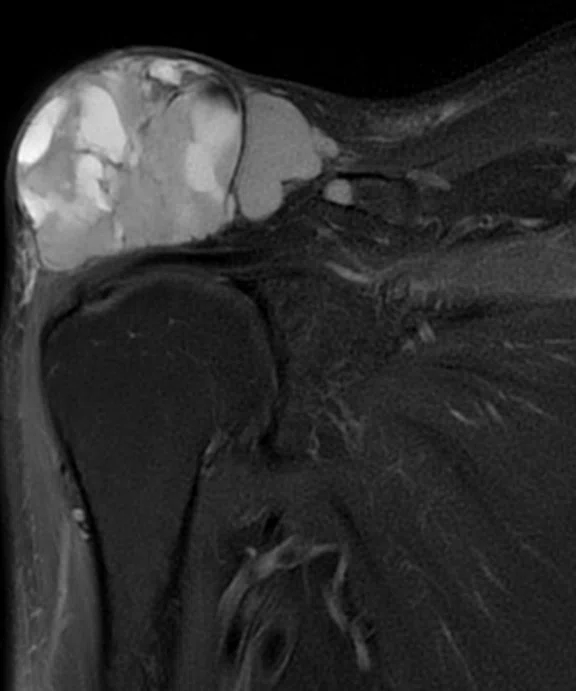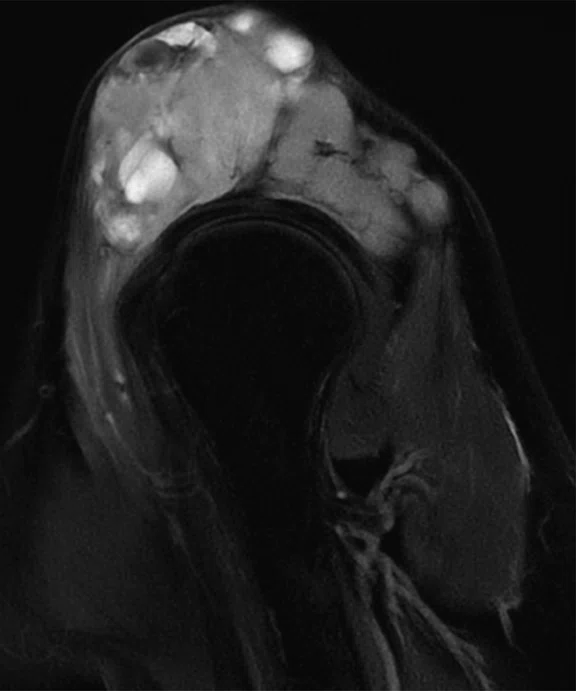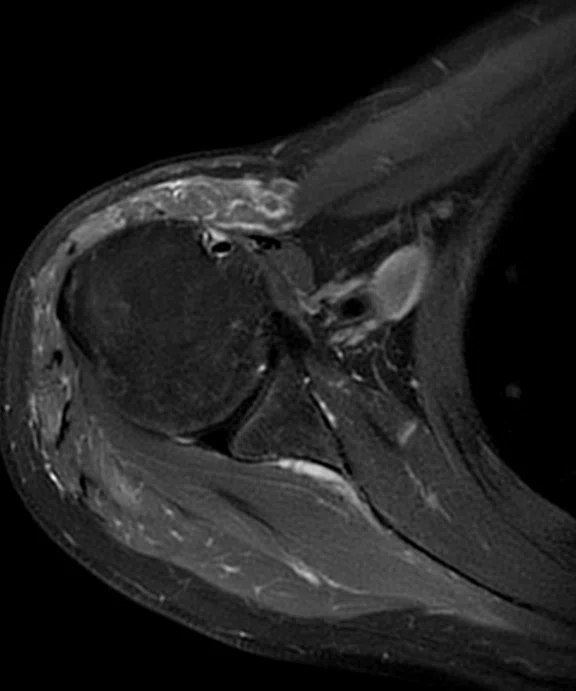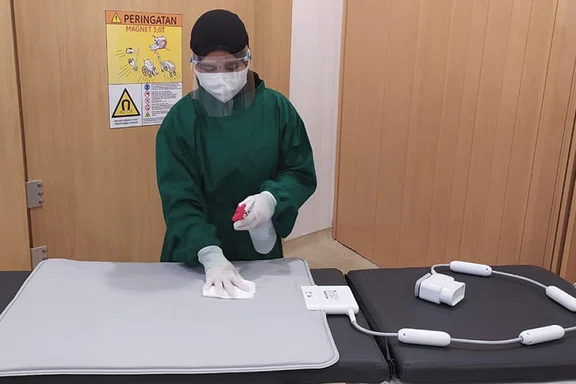A
Figure 2.
Examples of MSK MR images (knee and shoulder) using the AIR™ AA Coil. (A) Axial T2 FatSat, (B) axial T1, (C) coronal T2 PROPELLER, (D) coronal T2 FatSat PROPELLER, (E) sagittal T2 FatSat PROPELLER and (F) axial T2 FatSat PROPELLER.
B
Figure 2.
Examples of MSK MR images (knee and shoulder) using the AIR™ AA Coil. (A) Axial T2 FatSat, (B) axial T1, (C) coronal T2 PROPELLER, (D) coronal T2 FatSat PROPELLER, (E) sagittal T2 FatSat PROPELLER and (F) axial T2 FatSat PROPELLER.
C
Figure 2.
Examples of MSK MR images (knee and shoulder) using the AIR™ AA Coil. (A) Axial T2 FatSat, (B) axial T1, (C) coronal T2 PROPELLER, (D) coronal T2 FatSat PROPELLER, (E) sagittal T2 FatSat PROPELLER and (F) axial T2 FatSat PROPELLER.
D
Figure 2.
Examples of MSK MR images (knee and shoulder) using the AIR™ AA Coil. (A) Axial T2 FatSat, (B) axial T1, (C) coronal T2 PROPELLER, (D) coronal T2 FatSat PROPELLER, (E) sagittal T2 FatSat PROPELLER and (F) axial T2 FatSat PROPELLER.
A
Figure 1.
Using the MAGiC protocol, up to six contrast weightings can be produced from one acquisition in approximately 4 minutes with excellent image quality. (A) T1 MAGiC, (B) T2 MAGiC, (C) T1 FLAIR MAGiC and (D) T2 FLAIR MAGiC. It is recommended to acquire conventional T2 FLAIR images in addition to MAGiC.
B
Figure 1.
Using the MAGiC protocol, up to six contrast weightings can be produced from one acquisition in approximately 4 minutes with excellent image quality. (A) T1 MAGiC, (B) T2 MAGiC, (C) T1 FLAIR MAGiC and (D) T2 FLAIR MAGiC. It is recommended to acquire conventional T2 FLAIR images in addition to MAGiC.
C
Figure 1.
Using the MAGiC protocol, up to six contrast weightings can be produced from one acquisition in approximately 4 minutes with excellent image quality. (A) T1 MAGiC, (B) T2 MAGiC, (C) T1 FLAIR MAGiC and (D) T2 FLAIR MAGiC. It is recommended to acquire conventional T2 FLAIR images in addition to MAGiC.
D
Figure 1.
Using the MAGiC protocol, up to six contrast weightings can be produced from one acquisition in approximately 4 minutes with excellent image quality. (A) T1 MAGiC, (B) T2 MAGiC, (C) T1 FLAIR MAGiC and (D) T2 FLAIR MAGiC. It is recommended to acquire conventional T2 FLAIR images in addition to MAGiC.
E
Figure 2.
Examples of MSK MR images (knee and shoulder) using the AIR™ AA Coil. (A) Axial T2 FatSat, (B) axial T1, (C) coronal T2 PROPELLER, (D) coronal T2 FatSat PROPELLER, (E) sagittal T2 FatSat PROPELLER and (F) axial T2 FatSat PROPELLER.
F
Figure 2.
Examples of MSK MR images (knee and shoulder) using the AIR™ AA Coil. (A) Axial T2 FatSat, (B) axial T1, (C) coronal T2 PROPELLER, (D) coronal T2 FatSat PROPELLER, (E) sagittal T2 FatSat PROPELLER and (F) axial T2 FatSat PROPELLER.
‡It is recommended to acquire conventional T2 FLAIR images in addition to MAGiC.
result


A
Figure 3.
A technologist cleans and disinfects the AIR™ AA Coil after each use using level II PPE.
PREVIOUS
${prev-page}
NEXT
${next-page}
Subscribe Now
Manage Subscription
FOLLOW US
Contact Us • Cookie Preferences • Privacy Policy • California Privacy PolicyDo Not Sell or Share My Personal Information • Terms & Conditions • Security
© 2024 GE HealthCare. GE is a trademark of General Electric Company. Used under trademark license.
SPOTLIGHT
Improved efficiency with SIGNA Pioneer, MAGiC and AIR Coil during the COVID-19 pandemic
Improved efficiency with SIGNA Pioneer, MAGiC and AIR Coil during the COVID-19 pandemic
by Purwanto, RT(R)(MR), Lead MR Technologist and Ateng Handiyono, RT(R)(MR), RSUP Dr. Wahidin Sudirohusodo Makassar Hospital, South Sulawesi, Indonesia
RSUP Dr. Wahidin Sudirohusodo Makassar is one of the main hospitals of the Ministry of Health of the Republic of Indonesia, located in the province of South Sulawesi in eastern Indonesia. In 2019, the radiology department performed nearly 100,000 radiological examinations including MR, CT, ultrasound and X-ray. To improve radiology services, a SIGNA™ Pioneer 3.0T MR system was installed in late December 2019, making it the first advanced MR modality in eastern Indonesia.
RSUP Dr. Wahidin Sudirohusodo Makassar is one of the main hospitals of the Ministry of Health of the Republic of Indonesia, located in the province of South Sulawesi in eastern Indonesia. In 2019, the radiology department performed nearly 100,000 radiological examinations including MR, CT, ultrasound and X-ray. To improve radiology services, a SIGNA™ Pioneer 3.0T MR system was installed in late December 2019, making it the first advanced MR modality in eastern Indonesia.
The first COVID-19 case was reported in Indonesia on March 2, 2020, and the first reported COVID-19 patients (two cases) in South Sulawesi province on March 19, 2020. RSUP Dr. Wahidin Sudirohusodo Makassar was designated as one of the main hospitals to refer COVID-19 patients.
Due to the very fast transmission characteristic of this novel coronavirus, the radiology department prepared preventive measures, with the top priority to protect the health and safety of patients and staff by reducing the risk of spreading COVID-19 between patients, staff and the general public. These policies included limiting the number of radiological examinations according to priority, lengthening the time between exams to allow for proper disinfecting of the room and equipment and reducing the number of patients in the waiting area. Additionally, our hospital integrated PACS with the hospital information system to avoid patients waiting for results in radiology and provided complete personal protective equipment (PPE) for staff, particularly for high-risk radiology services, to reduce exposure to COVID-19.
Due to the relatively long duration of an MR exam, the possibility of COVID-19 contamination to rooms, equipment and radiology staff from an infected patient is heightened. Therefore, we implemented several new policies for MR services to reduce the potential risk of exposure to COVID-19 at RSUP Dr. Wahidin Sudirohusodo Makassar Hospital.
- All patients who undergo an MR exam are screened with the COVID-19 Early Warning Score tools. If the total score is ≥ 10, which is assumed to be very suspicious for COVID-19, we will postpone the exam.
- Recommend the use of the MAGiC (MAGnetic resonance image Compilation) sequence to reduce the duration of neuro exams. Using conventional protocols to obtain contrast-weighted T1w, T2w, T1 FLAIR, T2 FLAIR, STIR and PDW images can take up to 30 minutes to complete. Using the MAGiC protocol, we can produce six contrast weights with one acquisition in approximately 4 minutes with excellent image quality.
- Utilize the AIR™ Anterior Array (AA) Coil as often as possible for extremities and body scanning. At the end of April 2020, we received additional MR equipment, including the AIR™ AA Coil, which was the first implementation of this new coil in Indonesia. The coil element consists of small, very flexible conductive loops, each with a preamplifier component. Each AIR™ Coil element consists of a very thin, flexible INCA conductor attached to a novel pre-amplifier. The INCA material contains a novel conductor construction coated by a thin silicon material. The integrated preamplifier minimizes coupling interactions from one element to another, allowing more flexibility in placement and larger than normal overlapping of elements. This construction allows AIR™ AA Coil to have a higher signal-to-noise ratio (SNR) when elements overlap each other compared to conventional coils. In addition, the AIR™ AA Coil is a single, sealed unit that can be easily cleaned and disinfected.
The use of both the AIR™ AA Coil and MAGiC are important service solutions during the COVID-19 pandemic. Patient positioning of the AIR™ AA Coil is very simple and fast; depending on the exam, this coil may not need to be repositioned on the patient. MAGiC helps reduce overall scanning time. Together these technologies further limit the interaction between patients, the MR system and staff, thus potentially reducing the transmission of COVID-19.
Before implementing the AIR™ AA Coil in patient exams, we conducted a study using the built-in phantom material to determine how best to use it, as well as to check the signal-to-noise-ratio (SNR) value. In phantom measurements, using approximate clinical protocols, we were able to boost image quality using the AIR™ AA Coil because it offers the highest channel count and coverage of any coil we’ve used. In addition, its high channel count enables excellent parallel imaging acceleration, an important factor when trying to image potentially infectious patients as quickly as possible.
During the COVID-19 pandemic, we are using the AIR™ AA Coil more often compared to other conventional coils. It is an effective and very practical component of our infection prevention procedures without sacrificing patient comfort and safety or diagnostic image quality.
In our opinion, the use of the AIR™ AA Coil during the COVID-19 pandemic helped prevent or reduce transmission from patient to staff or patient to patient. This is in part due to the flexible contour of the AIR™ AA Coil, making it much easier to clean and disinfect after an exam.
We’ve implemented cleaning and disinfecting procedures for all MR equipment to prevent transmission of COVID-19. The radiographer cleaning and disinfecting the AIR™ AA Coil must use level II PPE – face shield, gloves, N95 mask and apron. Using a GE certified cleaning solution and a dry clean cloth, the technologist wipes the surface of the coil, wiping in one direction from one end of the surface to the other end, and then we let it dry before its next use (Figure 3). This entire procedure takes us less than 3 minutes compared to approximately 8 minutes for a conventional coil.









